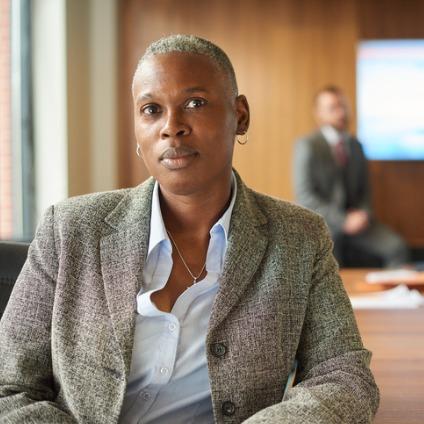To look back on LGBTQ+ history is to understand how far we’ve come as a society and how far we still have to go on the journey towards true equality for all.
Without the understanding that progress has been made, there will be no hope for further change in the workplace status quo. Learning about the past is the best way to make informed predictions on what should be coming next, and to have a better chance at preventing past mistakes.
According to Stonewall’s LGBT in Britain Work Report, almost one-in-five LGBTQ+ workers (18%) have been the target of negative comments or conduct from work colleagues in the last year because they're LGBTQ+. A further 18% said they faced discrimination based on their gender identity or sexuality while looking for work in the last year.
A brief LGBTQ+ history
While the initialism ‘LGBTQ+’ (which stands for lesbian, gay, bisexual, transgender, queer/questioning, and other identities outside the heterosexual/cisgender norm) is relatively new, each identity represented within it has always existed in human history, but mostly on the fringes of society. Even today, many LGBTQ+ people still face prejudicial treatment, discrimination, sexual harassment and microaggressions in the workplace.
Homosexuality was illegal in many people’s lifetimes, only becoming legalised in the UK in 1967. Under section 28 of the Local Government Act of 1988, it was also against the law to “promote homosexuality”, until the turn of the 21st century. That caused a lot of taboo, stigma and trauma that lives in the memories of many LGBTQ+ people currently in the UK workforce.
The first time the courts decided a person couldn’t legally change their sex was following a divorce case between trans fashion model April Ashley and her husband in 1970. This has meant trans people could never bring their true selves to work without backlash.
Over the course of the 20th century, several cases of gender discrimination against trans people were taken to employment tribunals – from wrongful dismissal to sexual harassment. In 2002, the European Court of Human Rights concluded that UK law violated trans people’s human right to privacy, after a trans person was excluded from a nursing course for not providing her birth certificate.
Today, sexuality and gender identity are characteristics protected from discrimination by the Equality Act 2010. This has led many to the misconception that equality between LGBTQ+ people and heterosexual, cisgender people has been achieved, but LGBTQ+ people still face issues in the workplace that others don’t, due to continued prejudices – or a lack of awareness in some cases. The more visible LGBTQ+ identities become, the more normalised and accepted they will be by others.
The impact on today’s LGBTQ+ workforce
One of the themes of February’s LGBT History Month is lived experiences. While it was far more socially acceptable to voice anti-LGBTQ+ hatred 20 years ago than it is now, discrimination still exists today.
Microaggressions disguised as banter have mostly replaced open hatred. These are usually subtle comments, sometimes made deliberately, that cause upset. They can damage people’s self-esteem and limit their professional progress.
Chris Brindley, Reed’s Head of Reward and Co-member Experience/Inclusion Lead, discusses lived LGBTQ+ experiences and shares how he ensures Reed is inclusive for all.

Chris states: “LGBTQ+ people are much more likely to experience sexual harassment in the workplace, they’re much more likely to not get promotions that they’re perfectly qualified for. There’s work by McKinsey and Company that says, even if LGBTQ+ people have all the skills and experience for a role, they still won’t apply for it because they feel inadequate.” This shows there is still work to be done to remove barriers for LGBTQ+ people at work.
For example, saying ‘Which one of you is the woman?’ shows rejection of anything outside the traditional male/female dynamic. Similarly, bisexual people in relationships might still be mistaken for gay or straight depending on who they are with at the time, or people might assume they have ‘turned’ gay or straight. Those who are attracted to more than one gender are still labelled as ‘greedy’.
Some identities have only recently become known about at all. A lack of awareness of asexuality has often led to dehumanising discourse about sex being one of the basic human needs. Also, words like ‘virgin’, ‘frigid’ or ‘spinster’ being used as insults can be exclusionary to those who experience little to no sexual attraction to anyone.
These types of interactions can still be common in the workplace today, but as awareness and understanding grows, we see a notable decline in pejorative language.
Being educated while section 28 was in force [1988-2000 in Scotland and 2003 in England and Wales] has had an impact on who those LGBTQ+ people are today. Many have had to unlearn how to suppress parts of themselves, either to protect themselves from others, or due to the lasting impact of internalised homophobia, and have lost touch with what it means to be themselves in the workplace.
The law made it seem like being gay was wrong, and some people might still carry that shame with them today. Chris added: “A lot of progress has been made but I don’t think the issue’s done. That’s why things like Pride and LGBTQ+ inclusion groups are so important still”.
Creating an inclusive workplace today
During LGBT History Month, it’s important to focus on the future as well as the past. The workplace has seen a lot of improvement in recent years – partly spurred on by the pandemic and employees’ increasing focus on what the workplace can do for them in areas such as employee wellbeing, flexibility and inclusion.
Chris notes some key areas businesses should look at to improve their inclusivity:
Being a visible ally
Calling out discrimination
Top-down inclusion
Using data to measure success
Partnering with inclusive organisations
Create an honest employee value proposition (EVP)
Most employers know there is always more to do when it comes to inclusion and belonging, and it could be a long time before we can say LGBTQ+ identities experience ‘complete equity and parity’ with the cisgender/heterosexual societal norm.
Chris shares: “I’ve seen a huge increase in the number of companies that have inclusion and belonging strategies to support a whole range of minority groups, not just LGBTQ+ people,” and they have made improvements through “sharing best practice and knowledge, and using some of the tools and data that we have available to us now.”
However, he advises those who ask for their employees’ data must use it to create meaningful change. Those who don’t use it to their advantage and measure the success of their strategies against targets will fall behind their competitors – and will see their workforce leave for companies that make discernible efforts to improve.
We also see more employers partnering with activist groups such as Stonewall to help promote inclusivity for all. These partnerships show employers care about workers outside of their output and want to nurture them as individual people.
HR teams are also growing to include entire teams dedicated to inclusion, as leaders see the correlation of inclusion and business success. According to Chris, Reed has “a real buy-in from our strategic leaders and our managing directors in the business to create meaningful change. Having that buy-in makes all of our work authentic.”
Business leaders being visible allies makes a huge difference towards helping professionals feel safer being themselves at work. He said: “It’s everybody’s job in the workplace to be an effective ally…for managers, it’s really important that you’re a visible ally. If your company is running inclusion and belonging activities, get involved, make sure you comment, make sure you participate. It will be noticed by LGBTQ+ people and they will appreciate it.”
Reed has inclusion working groups for different types of minorities, including LGBTQ+ ambassadors, whose roles are to communicate, celebrate and educate. They aim to educate non-LGBTQ+ people, for the benefit of LGBTQ+ people.
Creating an inclusive working environment has not only been proven to increase productivity, collaboration and teamwork, but also employee satisfaction and retention. More often, we have seen people leaving companies that don’t share their own social values. Organisations with an honest and inclusive employee value proposition will present potential and current employees with a clear view of their ethos from the beginning.
To find your next inclusive employer or talented employee, contact your nearest Reed office.




